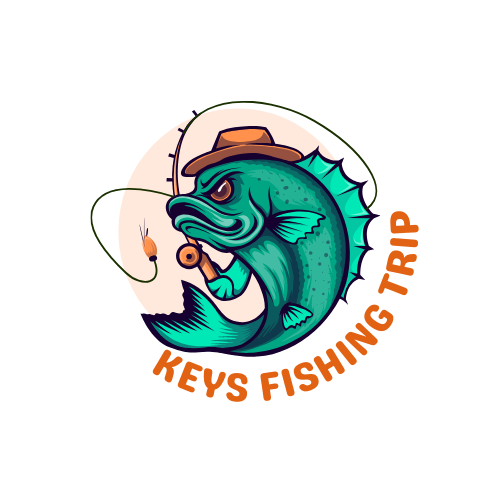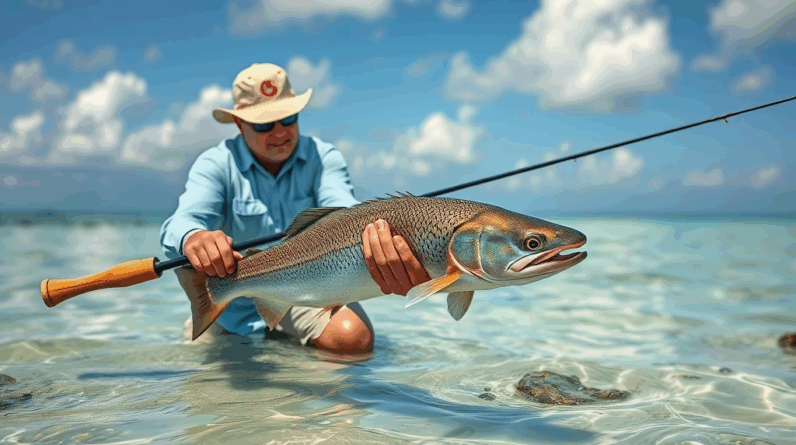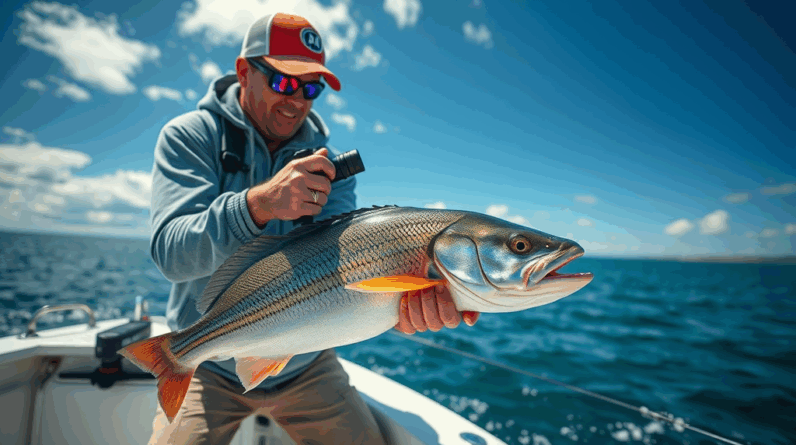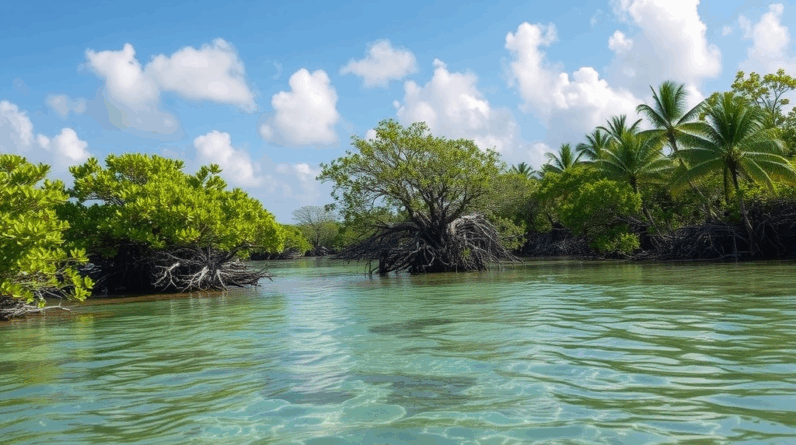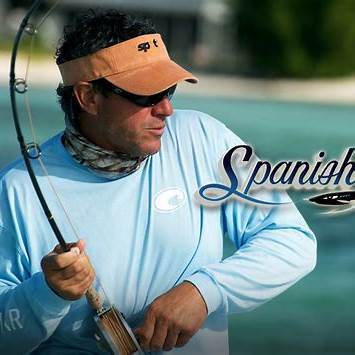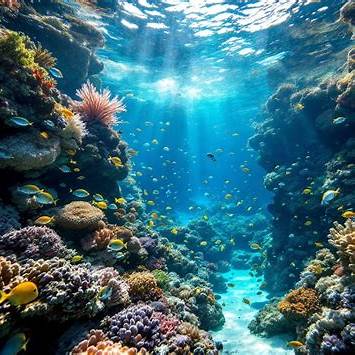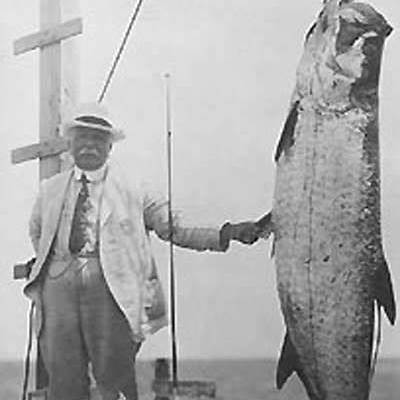
Are you ready to cast your line and reel in some big catches in the beautiful waters of Florida Keys? Look no further than our Essential Gear Guide for Saltwater Fishing in Florida Keys. From the best fishing rods and reels to the essential tackle and accessories, this guide has got you covered. With stunning crystal-clear waters, abundant marine life, and picturesque scenery, the Florida Keys provide an ideal setting for any angler. So grab your gear, hop on a boat, and get ready to experience the thrill of saltwater fishing in this captivating paradise.
Table of Contents
Rod and Reel
When it comes to saltwater fishing in the beautiful Florida Keys, one of the first things you need to consider is the type of rod and reel you’ll be using. Choosing the right fishing rod and reel combination can greatly impact your fishing experience and increase your chances of success.
Choosing the right fishing rod
When selecting a fishing rod, there are a few key factors to consider. First and foremost, you’ll want to determine the appropriate rod length for the type of fishing you plan on doing. Longer rods are generally better for casting distance, while shorter rods offer more control and precision.
Additionally, you’ll want to choose a rod with the appropriate power and action. Power refers to the rod’s strength and ability to handle different fish sizes, while action determines how much the rod bends when pressure is applied. For saltwater fishing in the Florida Keys, it’s recommended to choose a medium to heavy power rod with a fast or extra-fast action.
Selecting the appropriate reel
Equally important as the fishing rod is the reel. There are two main types of reels to choose from: spinning reels and baitcasting reels. Spinning reels are generally easier to use and more beginner-friendly, while baitcasting reels offer more control and accuracy.
When selecting a reel, you’ll want to consider the reel size, gear ratio, and drag system. Reel size should match the rod’s recommended line and lure weight. The gear ratio determines how quickly the line is retrieved, with higher ratios being better for fast-moving lures. Lastly, a smooth and reliable drag system is essential for battling aggressive saltwater fish.
Fishing Line
Choosing the right fishing line is crucial for saltwater fishing in the Florida Keys. The two main types of fishing line to consider are monofilament and braided line. Each has its own advantages and disadvantages, and choosing the right one depends on your specific fishing needs.
Monofilament vs. braided line
Monofilament fishing line is a popular choice due to its versatility and affordability. It has a good amount of stretch, which can be useful for absorbing sudden shocks or providing a bit of forgiveness when fighting fish. Monofilament lines also tend to be less visible in the water, making them ideal for shy or easily spooked fish.
On the other hand, braided fishing line offers higher strength and less stretch compared to monofilament. This makes it a great choice for targeting large, hard-fighting fish species such as tarpon or snook. Braided line also has a thinner diameter, allowing for longer casts and better sensitivity.
Recommended pound test for different species
When it comes to selecting the appropriate pound test for your fishing line, it’s important to consider the species you’ll be targeting. In the Florida Keys, you can expect to encounter a wide variety of fish, ranging from small snapper and grouper to powerful tarpon and sailfish.
For smaller fish species, such as snapper or sea trout, a fishing line with a pound test between 6 and 12 should suffice. If you’re targeting larger species like tarpon or shark, it’s recommended to use fishing line with a pound test ranging from 30 to 50.
Line color considerations
While the color of your fishing line may not seem like a significant factor, it can make a difference in certain fishing conditions. In clear waters with high visibility, a clear or low-visibility line can help prevent spooking fish. However, in situations where the water is murky or stained, a high-visibility line can be beneficial for tracking your line and detecting subtle bites.
Hooks and Terminal Tackle
Hooks and terminal tackle are essential components of any saltwater fishing setup. Selecting the right hook type and size, as well as using appropriate terminal tackle such as swivels, snaps, and leaders, can significantly increase your chances of landing that trophy fish.
Different hook types and sizes
When it comes to hooks, there are a wide variety of types and sizes to choose from. The right hook type and size depend on the species of fish you’re targeting and the type of bait or lure you’ll be using.
For general saltwater fishing in the Florida Keys, it’s recommended to have a selection of circle hooks, J-hooks, and treble hooks in various sizes. Circle hooks are great for catch-and-release fishing, as they tend to hook the fish in the corner of the mouth, reducing the risk of injury. J-hooks are versatile and suitable for a wide range of bait presentations, while treble hooks work well for artificial lures.
Swivels, snaps, and leaders
In addition to hooks, swivels, snaps, and leaders play important roles in saltwater fishing. Swivels are used to prevent line twist, allowing your bait or lure to spin naturally in the water. Snaps make it easier to change out lures or baits quickly. Leaders, on the other hand, provide extra strength and abrasion resistance near the hook, particularly when fishing for toothy fish species like barracuda or mackerel.
When selecting swivels, snaps, and leaders, opt for high-quality options that can withstand the saltwater environment. Saltwater can be corrosive, so choosing durable materials like stainless steel or nickel-plated brass is essential for longevity and performance.
Bait and Lures
Choosing the right bait and lures is key to attracting and enticing fish in the Florida Keys’ saltwater environment. Whether you prefer live bait or artificial lures, having a variety of options for different conditions is essential for success.
Live bait options
Live bait is an excellent choice for saltwater fishing, as it mimics the natural prey of many fish species. In the Florida Keys, popular live bait options include shrimp, pilchards, pinfish, and mullet. These baitfish can be fished using a variety of techniques, such as free-lining, using a bobber, or bottom fishing with a weight.
When using live bait, it’s important to keep it lively and in good condition. Properly aerating your bait bucket and keeping the water temperature consistent will help ensure your live bait stays healthy and active.
Artificial lures for various conditions
Artificial lures are another effective option for saltwater fishing in the Florida Keys. They come in a wide variety of shapes, sizes, and colors, each designed to imitate specific prey species and attract the attention of hungry fish.
For shallow water fishing, topwater lures like poppers or walk-the-dog style baits can be highly effective, creating enticing surface commotion. Soft plastic lures, such as jerkbaits or shrimp imitations, work well for fishing near the bottom or when targeting species like snook or redfish. Metal spoons and jigs are versatile options that can be cast far and retrieved quickly, making them great for targeting pelagic species like mackerel or tuna.
Tips for successful bait selection
When choosing bait or lures, it’s essential to consider the current fishing conditions and the species you’re targeting. Pay attention to factors like water temperature, tide levels, and the presence of baitfish or other prey species in the area.
Additionally, it can be helpful to research and talk to local guides or experienced anglers who are familiar with the fishing conditions and patterns in the Florida Keys. They can provide valuable insights and recommendations on the most effective bait and lures for specific situations.
Fishing Accessories
In addition to your fishing tackle, there are several accessories that can enhance your saltwater fishing experience in the Florida Keys. From tackle box organization to rod holders and fishing belts, having the right accessories can make your fishing trips more convenient and enjoyable.
Tackle box organization
Keeping your tackle organized is essential for easy access and efficient fishing. Invest in a tackle box with multiple compartments and trays, allowing you to separate different types of lures, hooks, and terminal tackle. Consider using tackle binders or storage bags for soft plastic lures or small tackle items.
Labeling your tackle box and having an inventory of your gear can be helpful, especially when you’re in a rush to get out on the water. This way, you can quickly grab what you need without wasting time searching for specific items.
Rod holders and fishing belts
Rod holders are invaluable accessories that allow you to secure your fishing rod while waiting for a bite. They come in various styles, including flush mount, clamp-on, and adjustable rod holders. The type you choose depends on your boat setup and personal preference.
Fishing belts are another handy accessory, particularly when targeting large, powerful fish. They provide support and distribute the weight when fighting a fish, minimizing strain on your back and arms. Look for belts with adjustable straps and cushioning for added comfort.
Needle-nose pliers and hook removers
Having a good pair of needle-nose pliers and hook removers is crucial for handling fish and removing hooks safely. Needle-nose pliers are handy for various tasks, such as retrieving hooks from a fish’s mouth, crimping split shot weights, or cutting fishing line.
Hook removers, also known as hook extractors, are specialized tools designed to safely remove deeply embedded hooks. They can save you precious time and prevent accidents when dealing with fish that have swallowed the hook or have it lodged in sensitive areas.
Fish landing net
A fish landing net is a must-have accessory for saltwater fishing, especially when targeting larger species or fishing from a boat. Landing nets come in various sizes and materials, such as nylon or rubberized mesh. Nylon nets are excellent for catch-and-release fishing, while rubberized nets are more fish-friendly, reducing the risk of injury or damage to their scales and slime coat.
When choosing a landing net, opt for one with a sturdy handle and a deep, wide netting area. This will allow you to safely scoop and land fish without the risk of the fish slipping out or the net breaking under the fish’s weight.
Safety Equipment
Safety should always be a top priority when engaging in any water activity, including saltwater fishing in the Florida Keys. Properly equipping yourself with the right safety equipment can ensure a fun and worry-free fishing experience.
Life jackets and personal flotation devices
When fishing in saltwater, it’s important to wear a properly fitted and U.S. Coast Guard-approved life jacket or personal flotation device (PFD). Even if you’re a strong swimmer, unexpected events can occur on the water, and having a PFD can save your life in emergency situations.
Ensure that your life jacket or PFD is suitable for saltwater use and provides adequate buoyancy for your body weight. It’s also a good idea to choose a PFD with bright colors or reflective strips for better visibility, especially in low-light conditions.
First aid kit
Having a well-stocked first aid kit on board is essential for treating minor injuries or providing immediate care in case of accidents. Your first aid kit should include items such as adhesive bandages, antiseptic wipes, sterile gauze pads, adhesive tape, tweezers, and a basic first aid manual.
Additionally, it’s beneficial to include items specific to saltwater fishing, such as anti-seasickness medication and sunburn relief creams. Always ensure that your first aid kit is up to date and that the items are in good condition.
Sunscreen and protective clothing
Spending extended periods in the Florida Keys’ sun and saltwater can have damaging effects on your skin. To protect yourself from sunburn and long-term sun damage, it’s crucial to apply a broad-spectrum sunscreen with a high SPF regularly. Opt for a waterproof formula to ensure it stays effective while fishing.
In addition to sunscreen, wearing protective clothing is highly recommended. Long-sleeved shirts, wide-brimmed hats, and sunglasses with UV protection can provide further protection against harmful UV rays. Lightweight and breathable clothing made from moisture-wicking fabrics can help keep you cool and comfortable throughout the day.
Navigation Tools
Navigating the waters of the Florida Keys requires the right tools and knowledge. Whether you’re exploring new fishing spots or simply ensuring you stay on the right track, having the right navigation tools can greatly enhance your fishing experience.
GPS and electronic navigation devices
Global Positioning System (GPS) devices are essential tools for precise navigation on the water. They allow you to mark and save waypoints, locate fishing hotspots, and navigate safely even in unfamiliar areas. Many GPS devices also offer additional features like tide charts, weather updates, and navigational aids.
Consider investing in a marine GPS device specifically designed for boating and fishing. Look for one with a user-friendly interface, a bright and clear display, and waterproof capabilities. It’s also a good idea to have spare batteries or a backup power source to ensure your GPS remains functional throughout your fishing trips.
Nautical charts and compass
While GPS devices are invaluable for navigation, having traditional nautical charts and a compass as backups is highly recommended. Nautical charts provide detailed information about water depths, navigational aids, potential hazards, and contour lines.
A compass is a simple yet essential tool for positioning and direction in case of GPS failure. It’s crucial to familiarize yourself with basic compass usage, such as understanding true north, magnetic north, and how to read bearings.
Fish finders and depth sounders
Fish finders and depth sounders are useful tools for locating fish and understanding the underwater terrain. These devices use sonar technology to detect fish and map the water depths beneath your boat, allowing you to identify potential fishing spots and structure that fish may be holding around.
When choosing a fish finder or depth sounder, consider factors such as frequency, power, and screen resolution. Higher frequencies generally offer better target separation and are ideal for shallow waters, while lower frequencies are better for deeper waters. Look for a device with a powerful transducer capable of providing accurate readings at various depths.
Fishing Regulations
Understanding and abiding by the fishing regulations in the Florida Keys is crucial for preserving fish populations and ensuring sustainable fishing opportunities for future generations. Familiarize yourself with the local fishing regulations, including catch limits, size restrictions, and protected species.
Understanding Florida Keys fishing regulations
The Florida Fish and Wildlife Conservation Commission (FWC) sets fishing regulations for the Florida Keys and surrounding waters. These regulations are designed to protect the fish populations, maintain healthy ecosystems, and prevent overfishing.
Regulations may include specific bag and size limits for different species, seasonal closures to protect spawning fish, and areas designated as protected zones or marine sanctuaries. It’s important to have a current copy of the FWC’s fishing regulations guide and consult it before your fishing trips.
Fishing license requirements
To fish legally in the Florida Keys, you’ll need to obtain a valid fishing license. Licenses can be obtained online through the FWC’s website or from authorized vendors. Depending on your residency status and the duration of your fishing trip, different license options are available.
It’s crucial to carry your fishing license with you at all times while fishing, as FWC officers regularly patrol the waters and may ask to see your license. Additionally, ensure that you comply with any specific license requirements for certain species or fishing methods, such as an additional permit for targeting certain reef fish or lobster.
Protected species and catch limits
The Florida Keys are home to various protected species that require special attention and care. Some of these species include tarpon, bonefish, and permit, which fall under strict catch-and-release regulations. It’s essential to handle protected species with care and release them unharmed to help preserve their populations.
Catch limits also apply to many fish species in the Florida Keys. These limits define the maximum number of fish you’re allowed to keep per day, per angler. It’s crucial to familiarize yourself with the specific catch limits for the species you’re targeting and ensure you’re within the legal limits.
Durable Coolers and Storage
After a successful day of fishing, you’ll need a reliable cooler for storing your catch and keeping it fresh until you’re ready to clean and prepare your fish. Choosing the right cooler size and considering insulation and ice retention features can make all the difference.
Choosing the right cooler size
When it comes to choosing the right cooler size, consider the amount of fish you typically catch, the duration of your fishing trips, and the available storage space on your boat or vehicle. It’s better to go slightly larger than you think you’ll need, as it can accommodate unexpected catches or additional items like bait and drinks.
Coolers come in various sizes, ranging from small personal coolers to large igloo-style coolers capable of holding an entire day’s catch for a group of anglers. Consider the dimensions and capacity of the cooler, as well as any additional features like built-in cup holders or cutting boards.
Insulation and ice retention features
Insulation and ice retention are crucial aspects to consider when selecting a fishing cooler. Look for coolers that offer thick insulation and airtight seals, as they help maintain a consistent internal temperature and keep your fish cold and fresh.
Coolers with features like extra insulation in the lid, removable dividers, or separate compartments for ice and catch can be advantageous. Additionally, consider coolers with drain plugs for easy water drainage and cleaning, as well as non-slip feet or tie-down points to secure the cooler during transportation.
Storage solutions for bait and catch
In addition to a cooler for your catch, having storage solutions for bait and other fishing-related items is essential. Bait storage containers, such as a bucket with an aerator or a live well, can keep your live bait healthy and active throughout your fishing trip.
For storing frozen bait, consider using resealable freezer bags or plastic containers that are waterproof and airtight. These will help prevent freezer burn and keep your bait fresh for future fishing trips.
Additional Tips
To make the most out of your saltwater fishing adventures in the Florida Keys, here are some additional tips to keep in mind.
Researching the best fishing spots
The Florida Keys offer a wide variety of fishing opportunities, from backcountry flats to deep-sea. Prior to your fishing trip, take the time to research the best fishing spots in the area and understand the specific techniques and baits associated with each location.
Local fishing reports, online fishing forums, and guidebooks can provide valuable insights into seasonal patterns, prevailing fishing conditions, and productive areas. Consider talking to local guides or experienced anglers, as they can provide insider knowledge and help you plan your fishing trips more effectively.
Understanding tides and currents
Tides and currents play a significant role in saltwater fishing, and understanding their effects can greatly enhance your chances of success. Familiarize yourself with the tidal patterns of the area you’ll be fishing in, as fish often feed more actively during certain tidal phases.
Additionally, learn how to identify and fish different current flows, such as rips or eddies, as they can concentrate baitfish and attract predatory fish. Understanding how to use tides and currents to your advantage can significantly improve your fishing results.
Learning from local guides and experienced anglers
The Florida Keys are home to many knowledgeable guides and experienced anglers who have spent countless hours on the water. Take advantage of their expertise and learn from their knowledge and experiences.
Consider booking a guided fishing trip with a local captain who knows the area well. They can provide valuable insights into local fishing techniques, bait preferences, and hotspots. Attending fishing seminars or workshops hosted by experienced anglers can also be a great way to learn new skills and gain valuable tips and tricks.
By following these tips and ensuring you have the right gear, knowledge, and safety equipment, you’ll be well-prepared for an unforgettable saltwater fishing experience in the beautiful Florida Keys. Remember to respect the environment, practice catch-and-release when necessary, and enjoy the thrill of reeling in your next fishing adventure!
